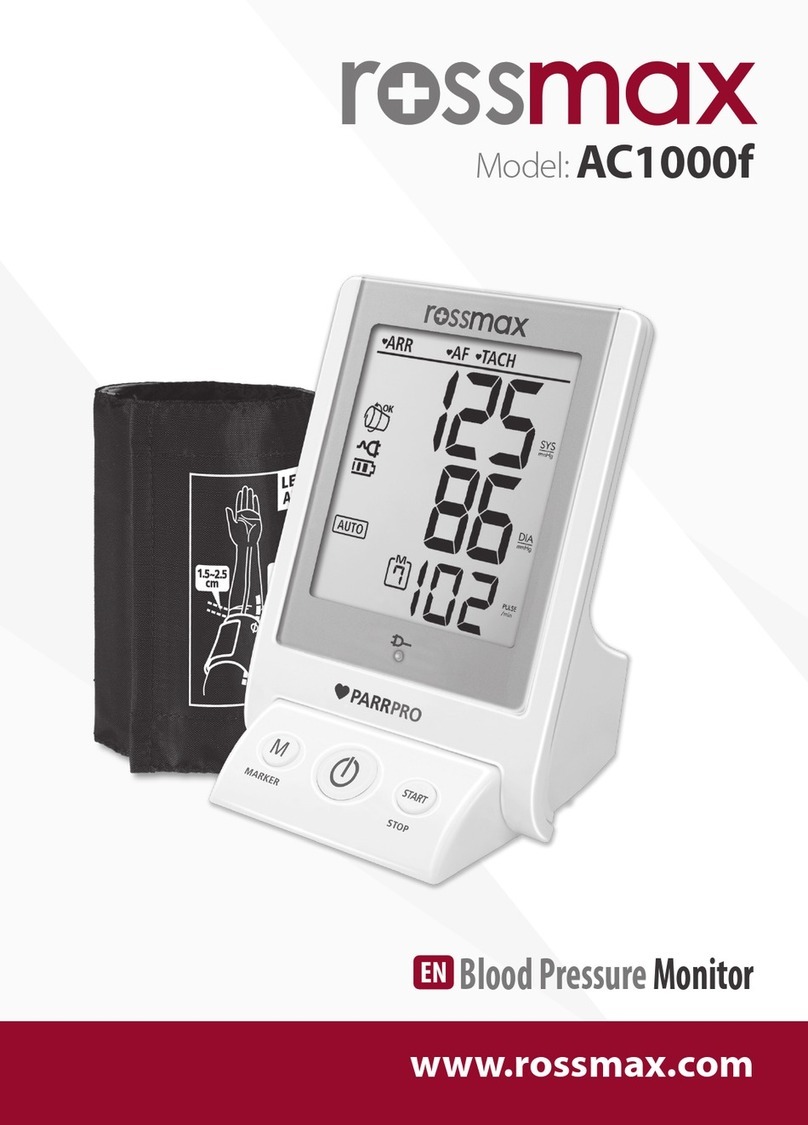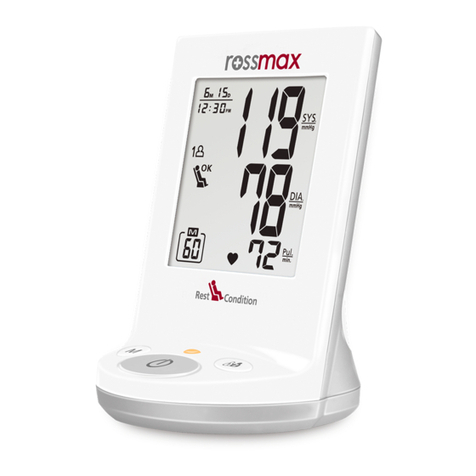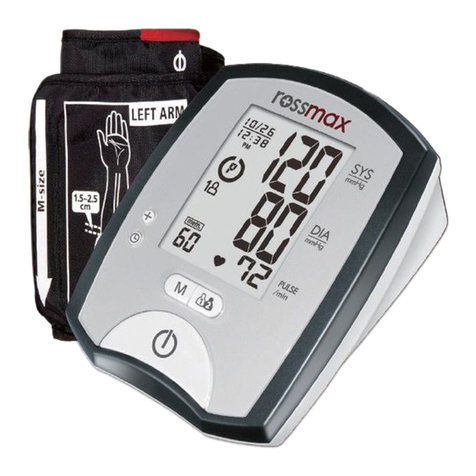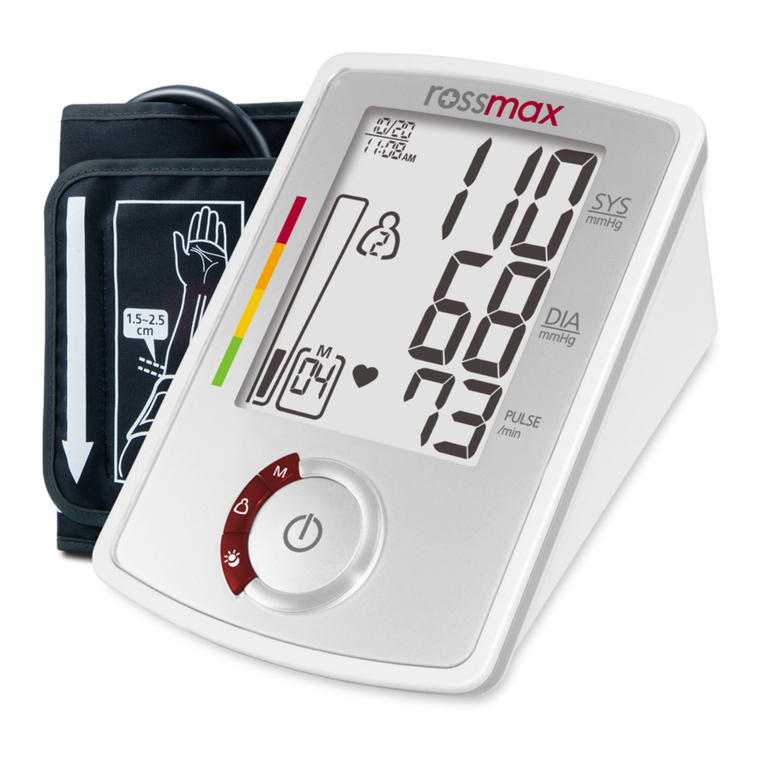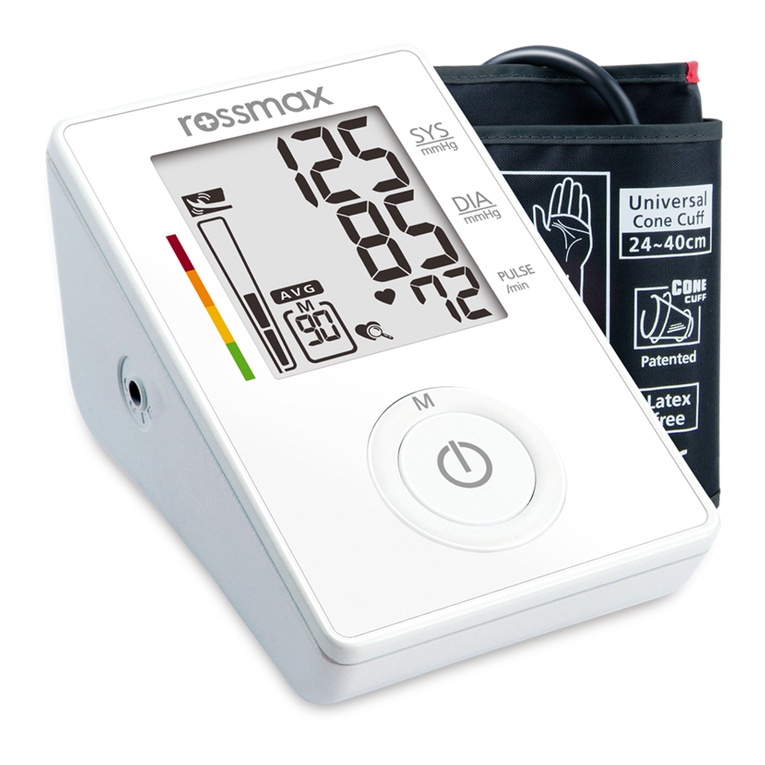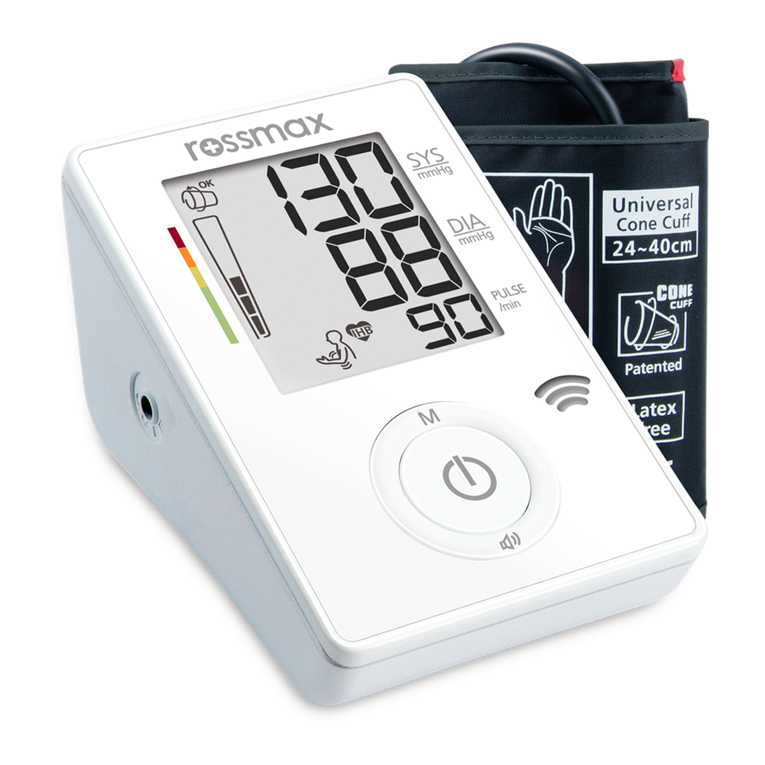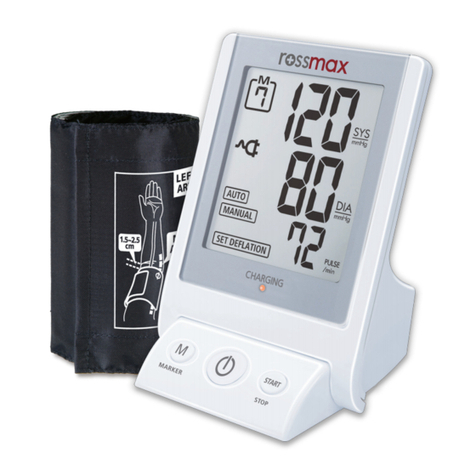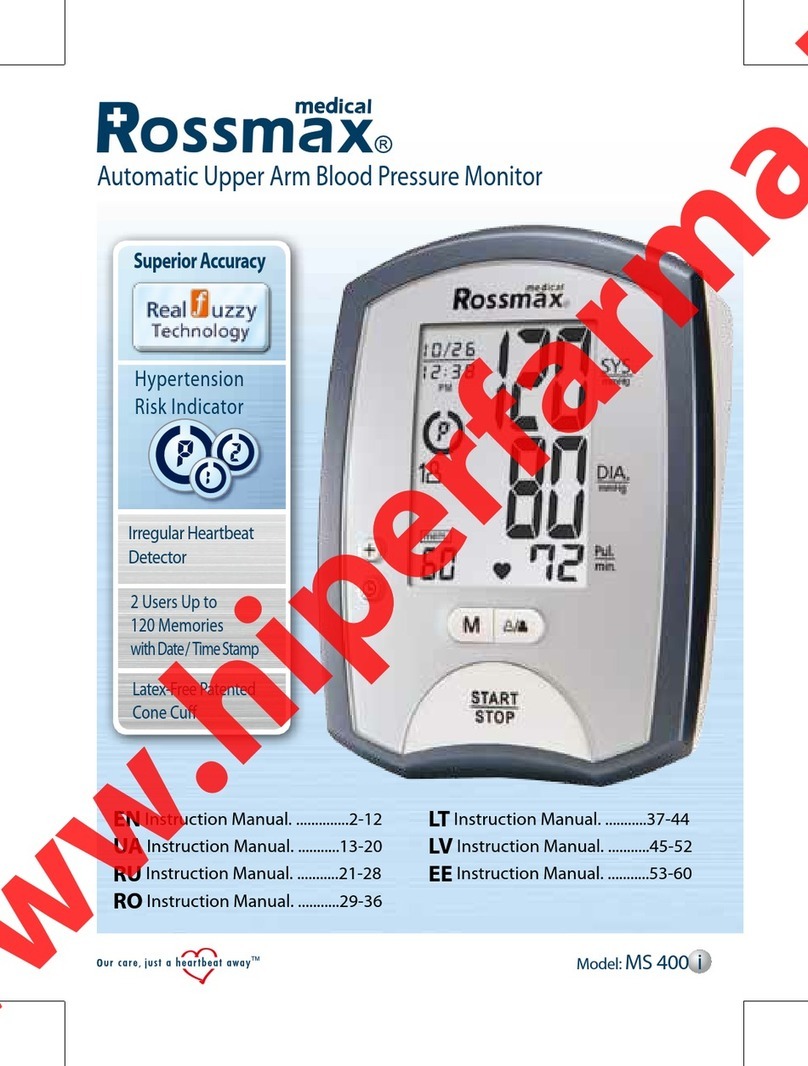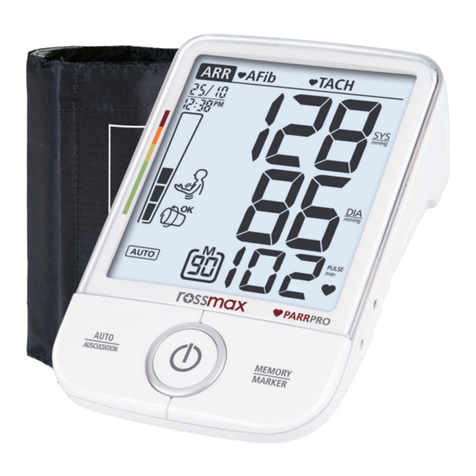8
Installing Batteries
1. Press down and lift the battery cover in the
direction of the arrow to open the battery
compartment.
2. Install or replace 4 “AA” sized batteries in
the battery compartment according to the
indications inside the compartment.
3. Replace the battery cover by clicking in
the bottom hooks rst, then push in the top
end of the battery cover.
4. As the supplied batteries are for test
only, they may be discharged earlier than
batteries you buy in stores. Replace the
batteries in pairs. Remove batteries when
unit is not in use for extended periods of time.
You need to replace the batteries when:
1. low battery icon appears on display.
2. the START/STOP key is pressed and nothing appears on display.
Caution:
1. Batteries are hazardous waste. Do not dispose them together with the household garbage.
2. There are no user serviceable parts inside. Batteries or damage from old batteries are not
covered by warranty.
3. Use exclusively brand batteries. Always replace with new batteries together. Use batteries of
the same brand and same type.
Using the AC Adapter (Optional)
1. Connect the AC adapter with the AC adapter jack in the back of the unit.
2. Plug the AC adapter into the socket. Please use the compatible AC adapters. (AC adapters
with required voltage and current indicated near the AC adapter jack.)
Caution:
1. Please unload the batteries when operating with the AC mode for a longer period of time.
Leaving the batteries in the compartment for a long time may cause leakage, which may lead
to damage of the unit.
2. No batteries are needed when operating with the AC mode.
3. AC adapters are optional. Please contact the distributor for the compatible AC adapters.
4. Use only the authorized AC Adaptor with this blood pressure monitor. Information for the
authorized AC adaptor, please refer to APPENDIX 1.
